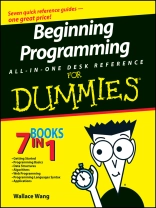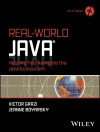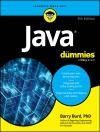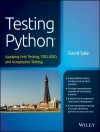The fun, fast, and easy way to learn programming fundamentals and essentials – from C to Visual Basic and all the languages in between So you want to be a programmer? Or maybe you just want to make your computer do what YOU want for a change? Maybe you enjoy the challenge of identifying a problem and solving it. If programming intrigues you (for whatever reason), Beginning Programming All-In-One Desk Reference For Dummiesis like having a starter programming library all in one handy, if hefty, book.
In this practical guide, you’ll find out about algorithms, best practices, compiling, debugging your programs, and much more. The concepts are illustrated in several different programming languages, so you’ll get a feel for the variety of languages and the needs they fill.
Inside you’ll discover seven minibooks:
* Getting Started: From learning methods for writing programs to becoming familiar with types of programming languages, you’ll lay the foundation for your programming adventure with this minibook.
* Programming Basics: Here you’ll dive into how programs work, variables, data types, branching, looping, subprograms, objects, and more.
* Data Structures: From structures, arrays, sets, linked lists, and collections, to stacks, queues, graphs, and trees, you’ll dig deeply into the data.
* Algorithms: This minibook shows you how to sort and search algorithms, how to use string searching, and gets into data compression and encryption.
* Web Programming: Learn everything you need to know about coding for the web: Hyper Text. Markup Language (better known simply as HTML), CSS, Java Script, PHP, and Ruby.
* Programming Language Syntax: Introduces you to the syntax of various languages – C, C++, Java, C#, Perl, Python, Pascal, Delphi, Visual Basic, REALbasic – so you know when to use which one.
* Applications: This is the fun part where you put your newly developed programming skills to work in practical ways.
Additionally, Beginning Programming All-In-One Desk Reference For Dummiesshows you how to decide what you want your program to do, turn your instructions into ‘machine language’ that the computer understands, use programming best practices, explore the ‘how’ and ‘why’ of data structuring, and more. And you’ll get a look into various applications like database management, bioinformatics, computer security, and artificial intelligence. After you get this book and start coding, you’ll soon realize that — wow! You’re a programmer!
İçerik tablosu
Introduction 1
Book I: Getting Started 5
Chapter 1: Getting Started Programming a Computer 7
Chapter 2: Different Methods for Writing Programs 29
Chapter 3: Types of Programming Languages 49
Chapter 4: Programming Tools 83
Chapter 5: Managing Large Projects with Software Engineering 107
Book II: Programming Basics 125
Chapter 1: How Programs Work 127
Chapter 2: Variables, Data Types, and Constants 141
Chapter 3: Manipulating Data 161
Chapter 4: Making Decisions by Branching 181
Chapter 5: Repeating Commands by Looping 199
Chapter 6: Breaking a Large Program into Subprograms 213
Chapter 7: Breaking a Large Program into Objects 231
Chapter 8: Reading and Saving Files 259
Chapter 9: Documenting Your Program 277
Chapter 10: Principles of User Interface Design 289
Book III: Data Structures 309
Chapter 1: Structures and Arrays 311
Chapter 2: Sets and Linked Lists 329
Chapter 3: Collections and Dictionaries 345
Chapter 4: Stacks, Queues, and Deques 361
Chapter 5: Graphs and Trees 375
Book IV: Algorithms 391
Chapter 1: Sorting Algorithms 393
Chapter 2: Searching Algorithms 409
Chapter 3: String Searching 423
Chapter 4: Data Compression Algorithms 435
Chapter 5: Encryption Algorithms 445
Book V: Web Programming 461
Chapter 1: Hyper Text Markup Language 463
Chapter 2: CSS 477
Chapter 3: Java Script 485
Chapter 4: PHP 497
Chapter 5: Ruby 509
Book VI: Programming Language Syntax 521
Chapter 1: C and C++ 523
Chapter 2: Java and C# 541
Chapter 3: Perl and Python 559
Chapter 4: Pascal and Delphi 575
Chapter 5: Visual Basic and REALbasic 589
Book VII: Applications 607
Chapter 1: Database Management 609
Chapter 2: Bioinformatics 625
Chapter 3: Computer Security 633
Chapter 4: Artificial Intelligence 643
Chapter 5: The Future of Computer Programming 657
Index 671
Yazar hakkında
Wallace Wang is a bestselling author with more than 2.3 million For Dummies books in print. He wrote Beginning Programming For Dummies and moonlights as a stand-up comic.












